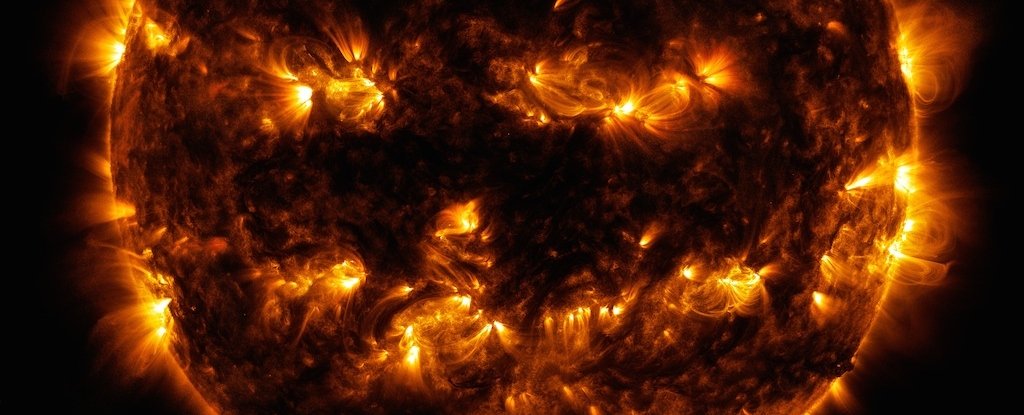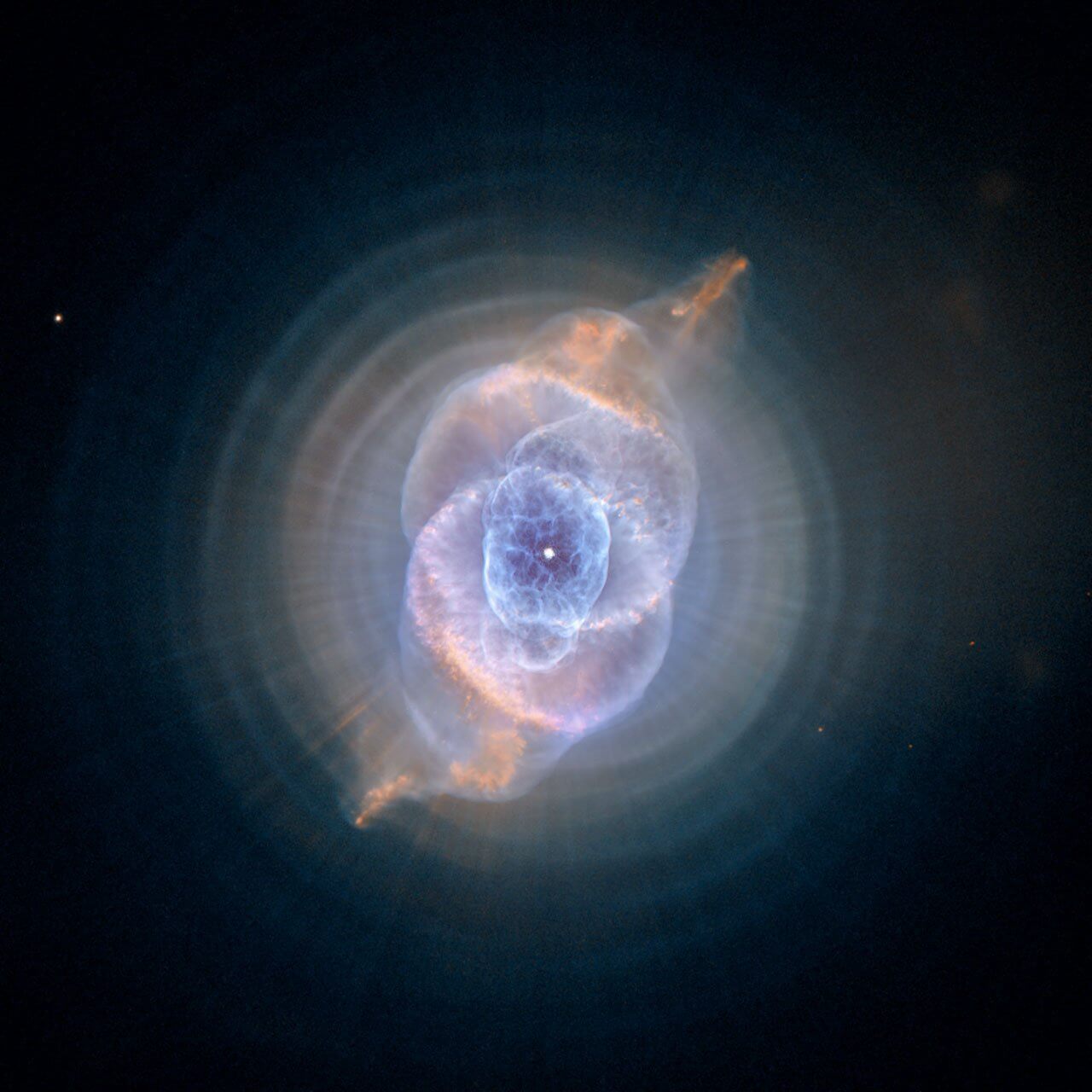- Get link
- X
- Other Apps

What metamorphoses do our Sun expect after the death of the star? Scientists have prepared a new prediction about what will be the end of our luminary and how our solar system will look after that. To part or unfortunately, mankind will not be able to see the last moments of the life of the star. It will die out much earlier, unless, of course, it moves to some other planetary system by that time.
According to the conclusions of earlier studies, our Sun should turn our system into a so-called planetary nebula - a bright cloud of hot gas and dust - but subsequent studies have indicated that the process of the death of our luminary will be more extensive. In a new article published in the journal Nature Astronomy, researchers state that after the death of the Sun our system will really turn into a giant glowing "bubble" of dust and gas that will last for several thousand years and then disappear.
Numerous studies and observations show that the life cycle of stars comparable in mass to the Sun is about 10 billion years. The current age of the Sun is about 4.6 billion years. In other words, our luminary has about 5 billion years left. However, during this time, of course, many interesting things will happen.
Astronomers say that in about 5 billion years the Sun will turn into a red giant. At this point, the core of the star will decrease in size, while its outer layers expand so much that it reaches the orbit of Mars, absorbing our planet during this process. Of course, if by this time the planet will still be in its place. As we are. The fact is that humanity has only 1 billion years left on Earth.
The problem is explained by the fact that the brightness of our luminary increases by about 10 percent every billion years. It seems that this is quite a bit, but this is quite enough to end all life on Earth. With this increase in brightness, the oceans of our planet will evaporate, as the surface becomes too hot to support the formation and retention of water. In general, we all will end. Again, if by this time we do not find any more suitable world for habitation or just do not die out.
In such a fate, no one doubts today, but scientists have been arguing for almost three decades about how the planetary nebula generated by them will look and whether it will exist at all.
The conclusions of several earlier studies indicated that the formation of a bright planetary nebula requires the presence of a star by mass at least twice as large as that of our Sun.
A new computer model developed by an international group of astronomers shows that our Sun, like 90 percent of the rest of the stars, first expects a transition to the red giant phase. Then, when the core, in which the thermonuclear reactions gradually stop, will cool down, the star will turn into a white dwarf. Its light will warm up and illuminate the surrounding clouds of gas, turning them into a bright spot in the night sky of other worlds, and the solar system will become the so-called planetary nebula.
"With the death of a star throws a huge mass of gas and dust - the so-called shell - into space. The mass of this shell can be equal to half the mass of the entire star. The ejection of the shell reveals the core of the star, in which, at this point, the fuel for thermonuclear reactions is already running out. In the end, it "turns off" and finally dies, "explains one of the authors of the new work, astrophysicist Albert Zilstra from Manchester University (UK).
"The discarded shell will be brightly illuminated by the finally not cooled core of the star for about 10 thousand years - quite a bit by the cosmic standards. Some planetary nebulae are so bright that they are visible at a distance of tens of millions of light years, even though the stars themselves, their illuminated, are much dimmer so they can be seen, "the astrophysicist explains.
As the researchers explain, the computer model they created can predict the life cycle of different types of stars and the potential brightness of planetary nebulae, according to different masses of luminaries.
By themselves, planetary nebulae - a fairly common phenomenon in the observed universe. The most famous of them are, for example, the Snail Nebula, the Cat's Eye Nebula, the Ring Nebula and the Bubble Nebula.

The Cat's Eye Nebula
They are called planetary nebulae, not because they have anything to do with planets. Some of the first nebulae were discovered by astronomer William Herschel in the late 18th century. The scientist suggested for them the term "planetary nebula" because of their apparent similarity with the Uranus disk. So the name caught on.
About 25 years ago, astronomers discovered one interesting detail: all large planetary nebulae have roughly the same dimensions and luminosity, despite the fact that they are often found in a variety of galaxies or star clusters, where there are mostly large stars or, conversely, only dwarf stars. On average, a typical planetary nebula shines ten thousand times brighter than the Sun, and in fact never oversteps this limit. From this it also came about that, theoretically, the observation of the nebulae would reveal how far away they are from us.
Subsequent studies confirmed this assumption. But, on the other hand, computer calculations showed that the brightness and dimensions of the planetary nebula depend very much on the mass that their progenitor possessed. For this reason, similar objects in groups of young stars should be brighter and larger by several times than nebulae in old globular clusters, which is not observed in reality.
This discrepancy caused many scientists, including the authors of the article, to fiercely argue about exactly how planetary nebulas are born and why astronomers can not find brighter objects. Zilstra and his colleagues resolved these contradictions by creating a new computer model of an aged star turning into a white dwarf, and the planet's nebula illuminated by it.
These calculations have unexpectedly shown that the predecessors of the authors of the article did not take into account how much the temperature of the core of the star varies with the discharge of its shells, it turned out that it heats up three times faster and more strongly than assumed by astronomers. Thanks to this, even small stars, whose mass is comparable to solar, can generate bright planetary nebulae, close to the maximum of their luminosity.
"These are excellent results. We not only received a technique that allows us to find very old stars in distant galaxies and determine their age, which was previously difficult to do. In addition, we resolved one of the oldest disputes in astronomy, and also learned what awaits the Sun in the future, after his death, "Zilstra summed up.
The article is based on materials .
- Get link
- X
- Other Apps
Comments
Post a Comment